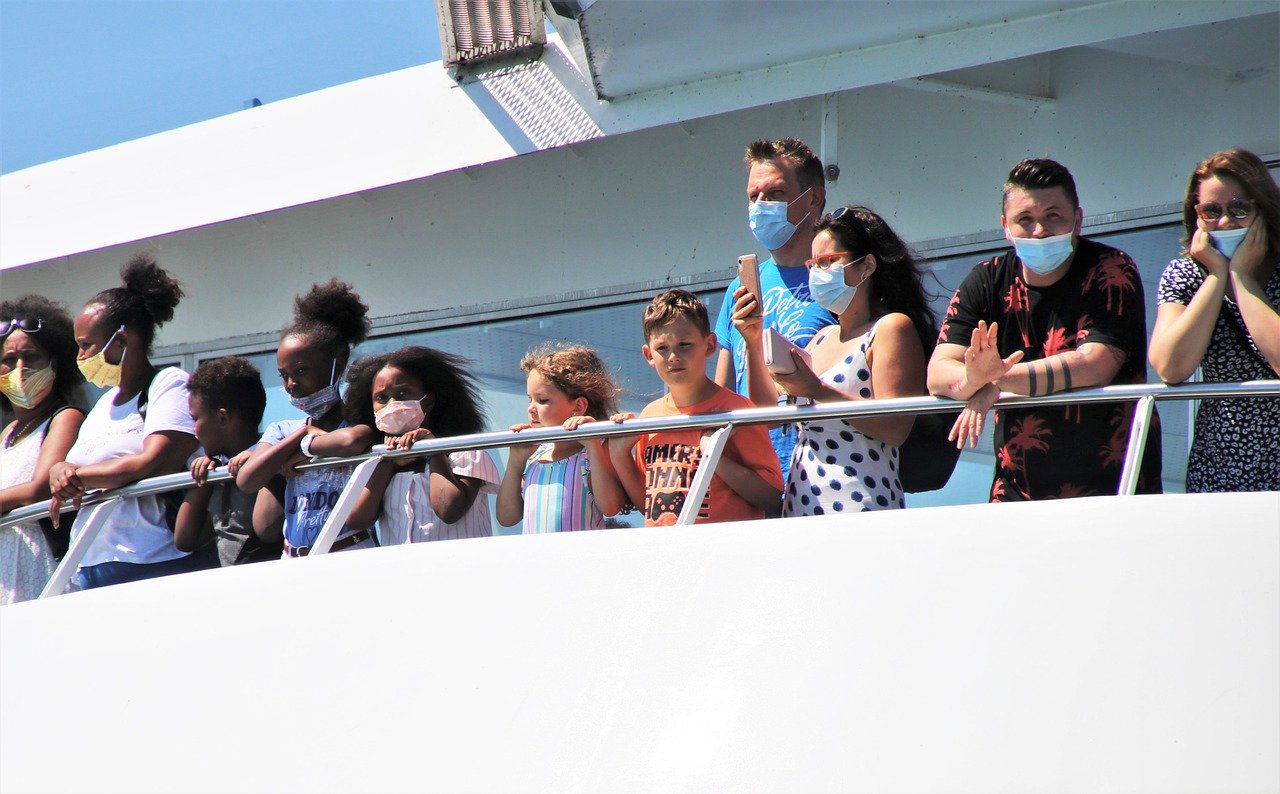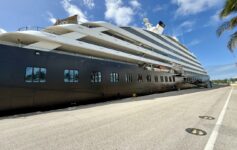The US regulatory bodies have lifted a ban on cruising to and from US ports. But you still (probably) can’t sail.
If you are considering booking travel or signing up for a new credit card please click here. Both support LiveAndLetsFly.com.
If you haven’t followed us on Facebook or Instagram, add us today.

The United States Lifted “No Sail” Order
The CDC has lifted its No Sail order set by the CDC earlier this year due to COIVD-19. The order was particularly important at the time because some of the first cases of mass infection took place on ships. The Diamond Princess passengers visiting Asian ports spent nearly a month at sea once a large outbreak was detected.
Cruise ships were not designed to be particularly robust when faced with contagious viruses or diseases. In fact, the prior year the norovirus had been an issue as well. Close quarters, stops at foreign ports, many touchpoints, and common serving areas are all elements that would pose a threat to social distancing and the health and safety requirements most businesses and transport providers have adopted.
There Are Cruise Ships Sailing
As part of the conditional lifting of the No Sail order, there are two ways to get on a cruise ship from the US in 2020. The first is fairly straight forward. Norwegian is offering a five-night departure from Miami to Key West and three stops in the Bahamas before returning home. Interested cruisers might want to book through a travel agency to ensure they are able to navigate the waters through the conditional period.
The other way to get on a ship is a bit less straight forward, but also, more interesting.
“Later phases involve “mock voyages,” with volunteers playing the role of passengers to test virus mitigation strategies on trips. Once ships have met certain requirements, they will be certified to begin operations with real passengers.” – Forrest Brown and Lauren Mascarenhas, CNN
My estimate, which is pure conjecture, is that the ships (and government agencies) will want to demonstrate a variety of passenger types and scenarios. This will have to include those who have been infected with COVID-19 in the past and have the antibodies, those who have neither the antibodies nor have tested positive in the past, and… again, conjecture… someone infected with the virus. My theory is that to prove ships have truly mitigated the risk, they have to present that there was a risk in the first place.
It’s also possible that ships move to a modified version of the “Hawaii” model in which all passengers must test negative prior to embarkation – no quarantine waivers permitted. This would demonstrate a way of moving forward that seems inline (if not lockstep) with some countries/states and United’s latest move.
Even After Passengers Are Allowed Back, Limitations in Place
There are limitations that will remain in place once passengers are allowed to hit the high seas again. Cruise lines are clearly not confident in passengers returning in November, there are no scheduled departures. Even in December, I found just one opportunity to sail. Adding back inventory will take time. Crews will need to reposition at ports, ships will need to come out of storage, the new COVID-19 measures installed, training – it won’t be fast.
Even if cruise lines had already moved ships and crews back into place and installed the measures while shut down, they wouldn’t be able to sell tickets without knowing when they could depart. As such, it’s unlikely we will see more than the single cruise listed and those “mock voyages” the CDC outlined.
Once cruising resumes (January has plenty of dates available), capacity constraints may be an issue. Right now, there are plenty of incentives to get paying customers back on ships. But if there is pent up demand (Allegiant saw a glimpse of this when COVID-19 numbers dropped and restrictions briefly lifted in June), those sailings may sell out quickly. Cautious cruise lines, though in desperate need of cash, may exercise restraint in adding back ships and crews only to have a new No Sail order placed on them if virus numbers rise again.
Conclusion
Lifting the No Sail order is welcome progress. Changes that the cruise lines have proposed/implemented must have been substantial enough to warrant the CDC lifting its order (though still not recommending leisure cruising.) I agree with the testing model of mock cruises and also agree that capacity limitations should be in place. Adding safety measures should help as will more caution exercised by crews and travelers.
What do you think? Will you sail soon? Is there a metric or condition that would need to be met before you feel comfortable sailing again?



Since my first passenger ship voyage (Le Havre to New York aboard the FRANCE in 1971) I’ve sailed aboard more than 80 ships. I love being at sea. But until there’s a vaccine and I’m convinced it’s safe to take a cruise, I’m not going anywhere. I think it will be 2022 before cruise lines are up and running again. Those cruise lines that survive that is…
Until an effective vaccine is developed the only cruising I’ll see is the ducks cruising on my pond. Already had my pandemic cruise experience earlier this year stuck at sea off the coast of Africa on an uninfected ship skirting a bunch of infected countries. Wish you have better luck with rapid testing for travel than the White House had.
I had a “pandemic cruise experience” as well. On March 13th I was aboard a cruise ship in Dubai, having flown-in to take a long-anticipated, two-week cruise through the Suez Canal to Athens. Before the ship had even left the pier, we were informed over the PA system that the cruise had been cancelled. This announcement came just as we’d finished unpacking…